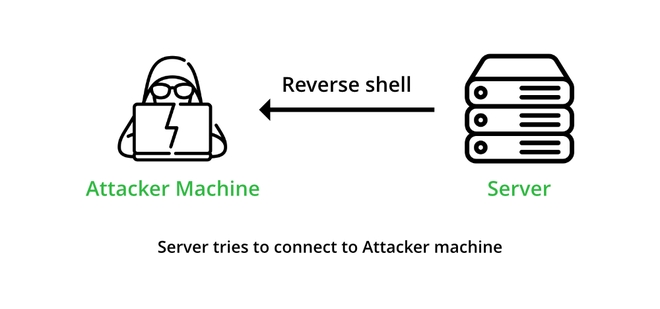Bind vs Reverse Shell Concept
Source: https://www.geeksforgeeks.org/ and GPTs
In the context of penetration testing and cybersecurity, a "shell" refers to a user interface for accessing the operating system's services. In simpler terms, it's a way to interact with the computer's operating system through commands. There are two primary types of shells:
Command-Line Shells: These allow users to interact with the operating system via text-based commands. Examples include the Windows Command Prompt, PowerShell, and Unix/Linux shells like Bash, Zsh, or Ksh.
Graphical Shells: These provide a graphical user interface (GUI) to interact with the operating system. Examples include the Windows GUI, macOS Finder, or various Linux desktop environments like GNOME or KDE.
In penetration testing:
When a penetration tester (or attacker) gains access to a shell on a target system, they can execute commands as if they were a legitimate user of that system. This is a critical step in many cyber attacks, as it often grants the attacker the ability to explore, extract data, or exploit the system further.
Both bind shells and reverse shells are methods to gain remote access to a command-line shell on a target system. The difference lies in how the connection between the attacker and the target system is established, as previously explained.
Gaining access to a shell on a target system is a significant step in penetration testing, as it can allow for deep control and exploration of the system, depending on the level of access (user privileges) that the shell operates under.
So what is Bind Shell and Reverse Shell. Lets gooo!
Bind Shell:

Bind Shell
A bind shell is a sort of setup where remote consoles are established with other computers over the network. In Bind shell, an attacker launches a service on the target computer, to which the attacker can connect. In a bind shell, an attacker can connect to the target computer and execute commands on the target computer. To launch a bind shell, the attacker must have the IP address of the victim to access the target computer.
Reverse Shell:

Reverse Shell
A reverse shell or connect-back is a setup, where the attacker must first start the server on his machine, while the target machine will have to act as a client that connects to the server served by the attacker. After the successful connection, the attacker can gain access to the shell of the target computer.
To launch a Reverse shell, the attacker doesn’t need to know the IP address of the victim to access the target computer.
Difference Between Bind Shell and Reverse Shell
NO.
Bind Shell
Reverse Shell
1.
Bind Shells have the listener running on the target and the attacker connects to the listener in order to gain remote access to the target system.
In the reverse shell, the attacker has the listener running on his/her machine and the target connects to the attacker with a shell. So that attacker can access the target system.
2.
In Bind shell, the attacker finds an open port on the server/ target machine and then tries to bind his shell to that port.
In the reverse shell, the attacker opens his own port. So that victim can connect to that port for successful connection.
3.
The attacker must know the IP address of the victim before launching the Bind Shell.
The attacker doesn’t need to know the IP address of the victim, because the attacker is going to connect to our open port.
4.
In Bind shell, the listener is ON on the target machine and the attacker connects to it.
The Reverse shell is opposite of the Bind Shell, in the reverse shell, the listener is ON on the Attacker machine and the target machine connects to it.
5.
Bind Shell sometimes will fail, because modern firewalls don’t allow outsiders to connect to open ports.
Reverse Shell can bypass the firewall issues because this target machine tries to connect to the attacker, so the firewall doesn’t bother checking packets.
Last updated
Was this helpful?